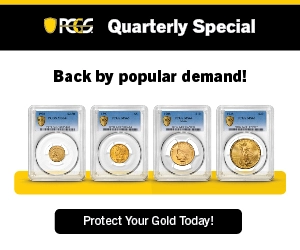
By Jack D. Young, Early American Coppers (EAC), and the Dark Side Group ……
“Red Book Counterfeit (RBC)” is a term I use to describe fakes that can be determined as bad by simply referring to images and information found in one of the most fundamental reference guides in the hobby: A Guide Book of United States Coins – aka, the Red Book!
In this article, I will showcase some of the common examples currently found for sale that should fool no one owning a recent edition; I purchased a 2025 Red Book for the purposes of this article and will describe images and data from it for each RCB included here.
The majority of this type of fake I have documented are U.S. dollars, but there are a couple of other types with which I will start.
Red Book Counterfeit Lincoln Cents
The first group is one I have nicknamed the “Smirking Lincolns” and this awesome 1922 off-center one-cent coin.

The seller wanted a hefty amount for this one and claimed ICG certification (which it did not have). Lincoln’s portrait obviously does not match any shown in the Red Book!
I show a comparison of this example with a genuine example courtesy PCGS CoinFacts:
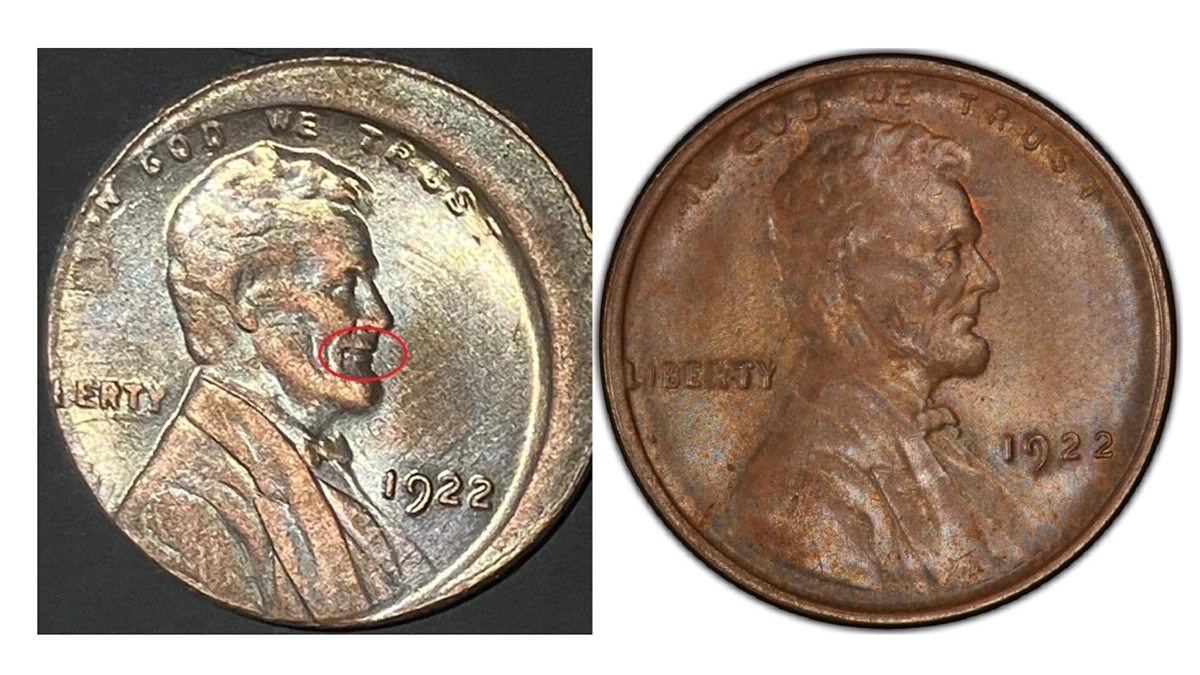
Lincoln seems much happier on the counterfeit! And he has a whole family of lookalikes available on the internet:

Draped Bust Counterfeits
Moving on to an early half dollar, this eBay seller incorrectly describes it as a dollar.

I have circled a couple of attributes common to various dated counterfeits of this type, but the Red Book attribute is the “no stem” feature, only known on 1806-dated coins.

And to early dollars with a “face only a mother could love”! These are seen with various dates including 1804; this RBC is dated 1799.
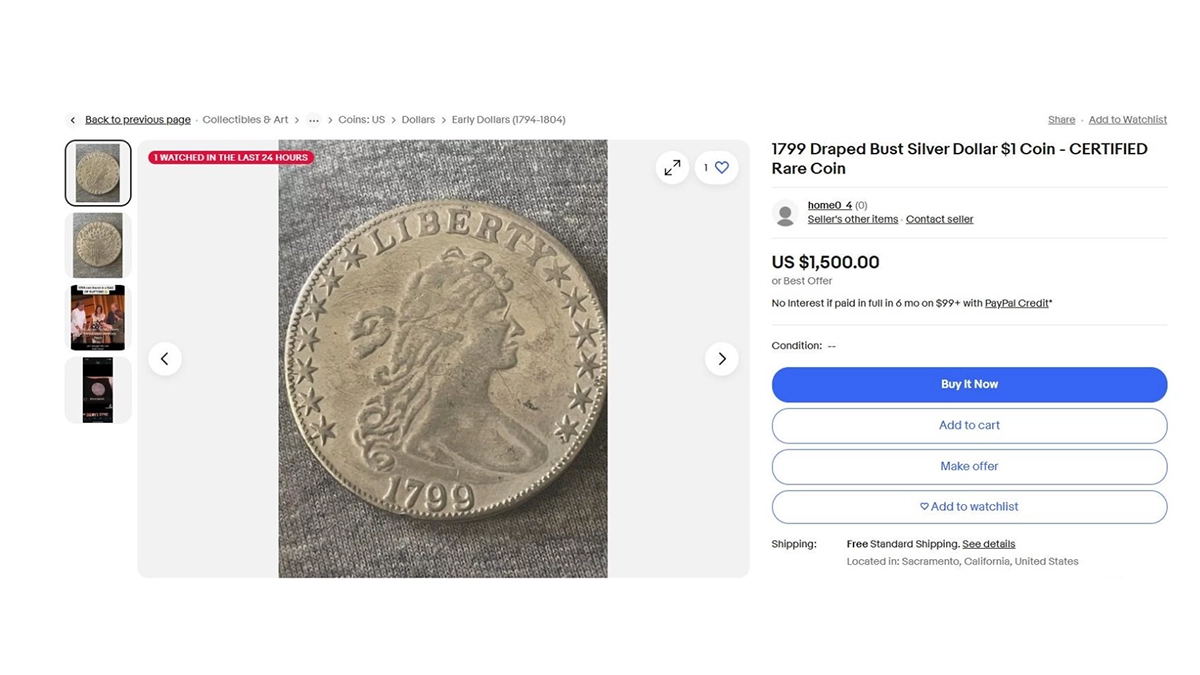
Compare this image to any of the Draped Bust Dollar images in the Red Book and you just have to chuckle!

RBC fake (left); Genuine example courtesy PCGS (right).
Another group of fakes seemingly everywhere for sale currently are based on the 1795 “uncentered bust”, the only Draped Bust Dollar with this obverse design and noted in the Red Book. But they exist in nearly every date in the minds of the counterfeiters! I covered this family of fakes in a previous CoinWeek article.

Below are PCGS CoinFacts images of 1795 centered and off-centered bust dollars (“Uncentered” in the Red Book). As seen in a 1796 dated example for sale on the ‘Bay:
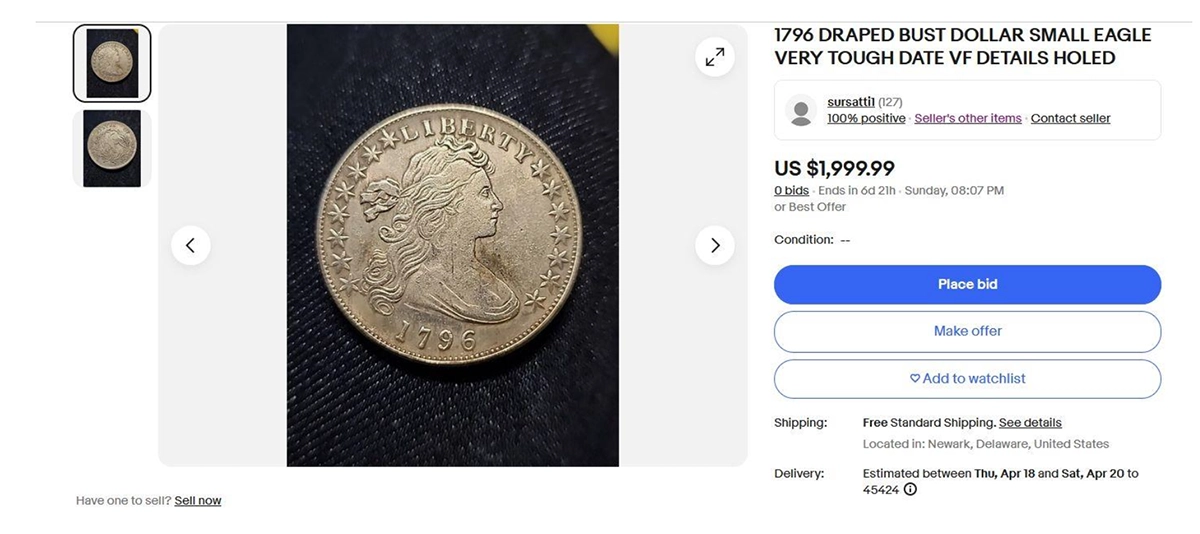
Also known as “vampire counterfeits” for obvious reasons when one looks:
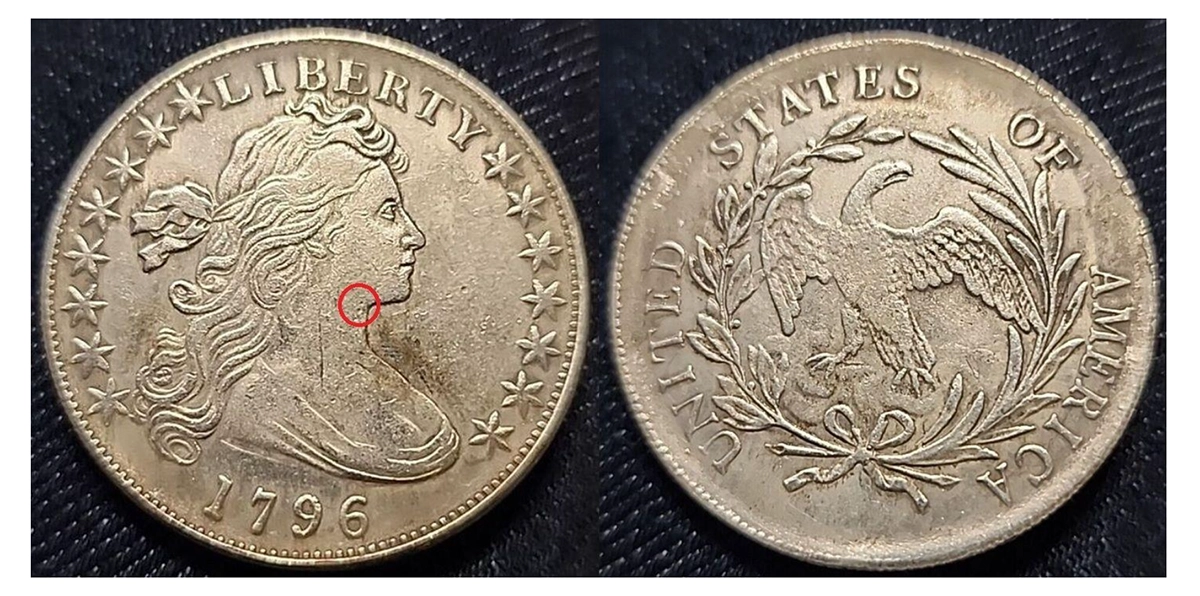
Liberty Seated Dollars
Next, bad Liberty Seated Dollars. Common issues with these center on With and Without Mottos and “CC” reverses of dates that don’t match the correct time frame for minting of either.
Referencing the Red Book for these, Liberty Seated Dollars were first struck (for general circulation) in 1840 and ran through 1873. The reverse motto IN GOD WE TRUST was added in 1866, and Carson City struck the first CCs in 1870.
It seems like I find bad Liberty Seated Dollars for sale online every day. All of these listings would be flushed out with a Red Book. The first is pretty silly, but listed as an error with no returns and getting bids before being removed:
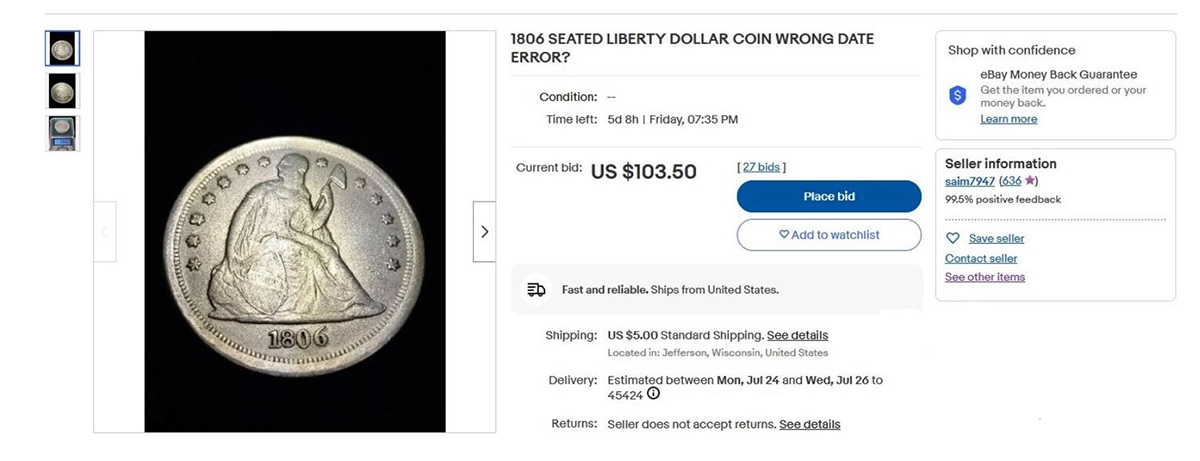
And the seller’s description:

And a typical counterfeit of the “type”, the seller maintained it is genuine:
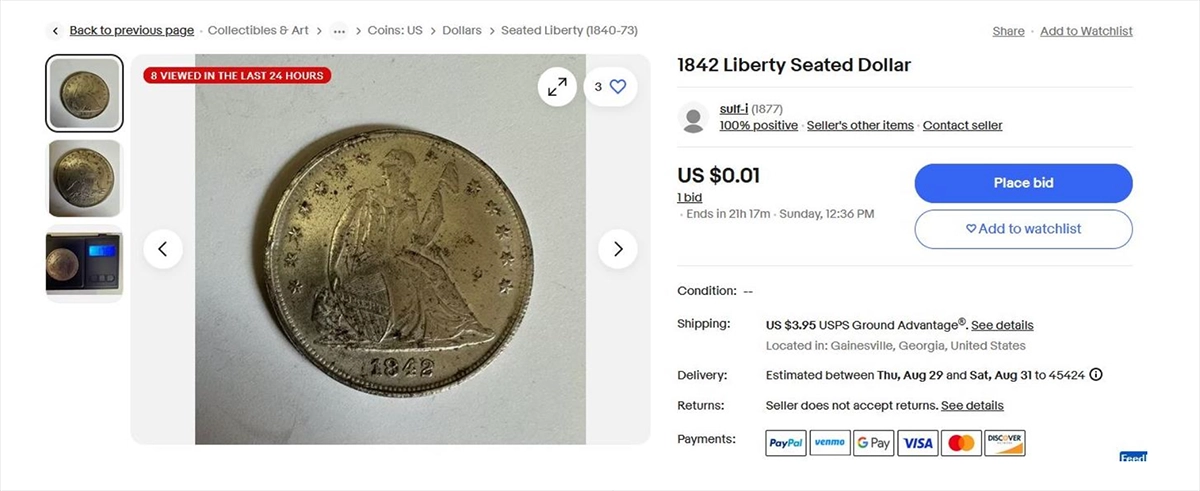
The scale always adds a degree of authenticity.
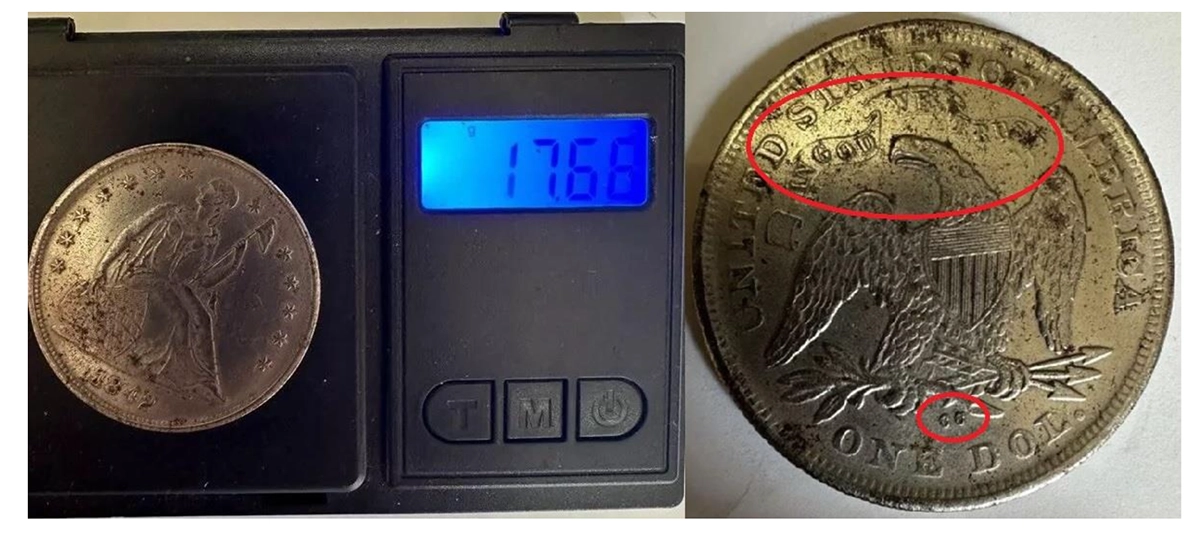
And of course, the “No Motto” RBCs; staples add authenticity as well.

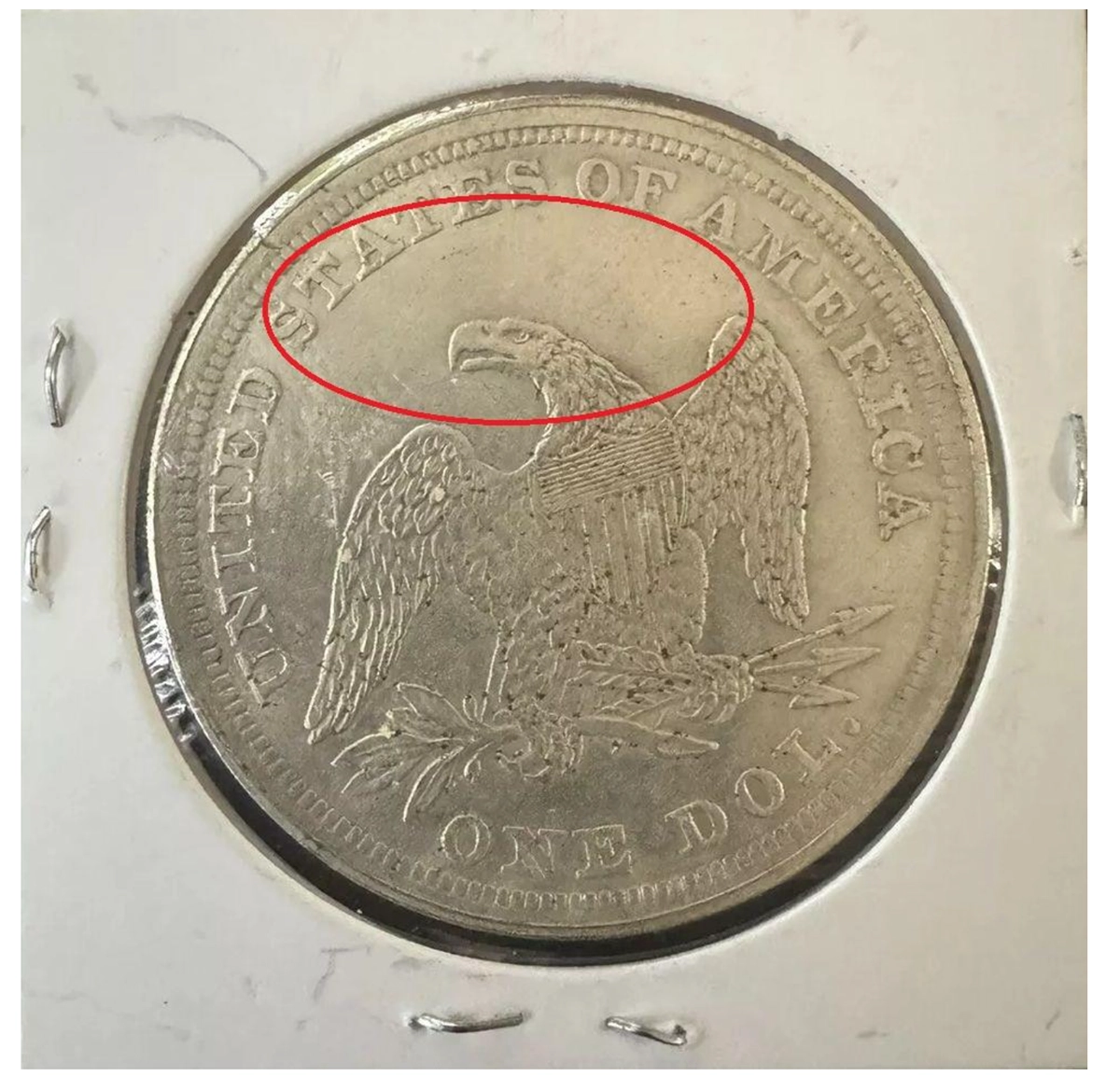
Trade Dollar Fakes
Trade Dollars are one of the most faked groups of U.S. coins. Typical of many RBCs I find, these regularly center around the wrong type of reverse for the date. Again, from the Red Book, Trade Dollars were first struck in 1873 as Liberty Seated coinage was ending.
A crib sheet I pulled together utilizing an image from the internet and information from the Red Book is helpful when reviewing Trades. One thing I do when evaluating an example is verify the correct reverse type for the date.

So, not much review is necessary for this first eBay-listed Red Book Counterfeit.

And this one; I suppose weight is pretty important for this RBC!
The reverse is a common bad “CC” reverse used for many different fakes. And again, referencing the Red Book, Carson City struck the first CCs in 1873.
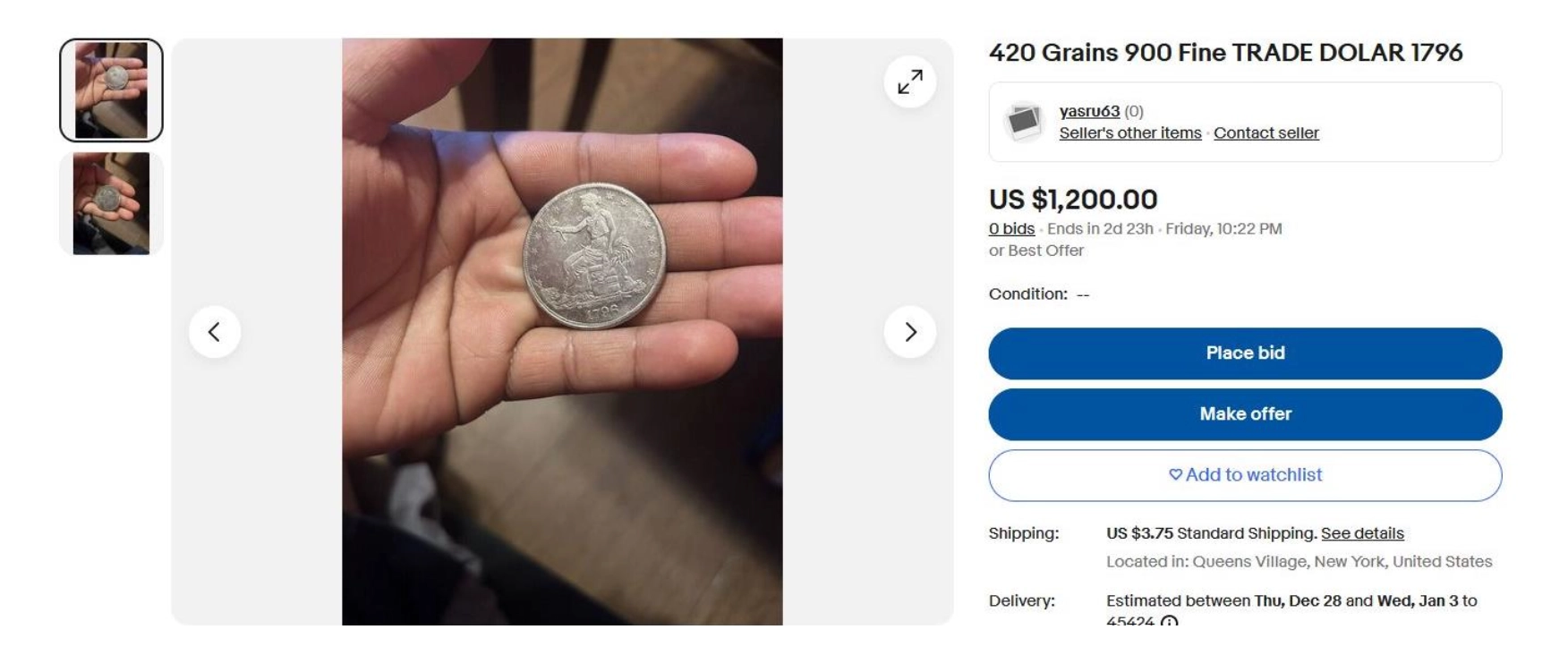
Next, an RBC wrong reverse type 1881-CC. This one was listed as “educational” and is a good example of the type:
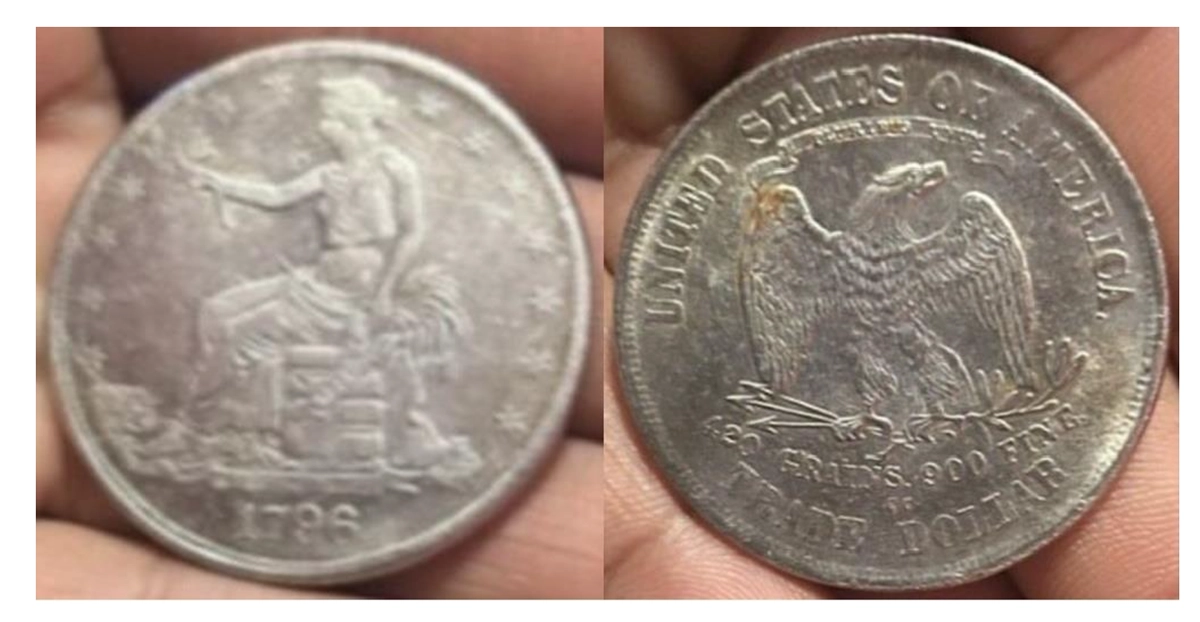
The date digits are obviously bad to most experienced collectors, but it is the reverse that fails to match a genuine specimen. Per my posted crib sheet, it is the wrong type for the date.
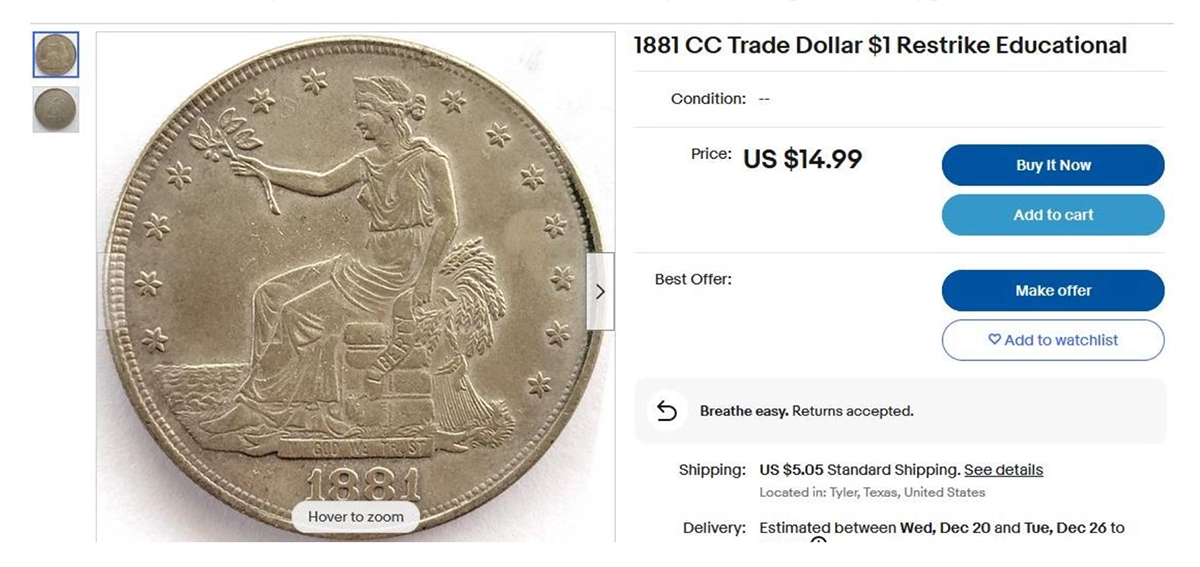

And since only Proofs were struck from 1879 through 1885 (again, reference the Red Book), no 1881-CC examples exist, period.
The “King” of Counterfeit U.S. Coins
Likely the “king” of counterfeited US coins, we now come to the Morgan Dollar. Many current Morgan Dollar counterfeits take some knowledge of genuine varieties (VAMs) to determine whether or not they are bad, and there are many articles on the internet documenting specific known examples.
But information in the Red Book can be used to evaluate the fakes I document here.
Understanding the reverse types used for the initial year of 1878, as well as when each mint actually produced coins, will smoke the following out:
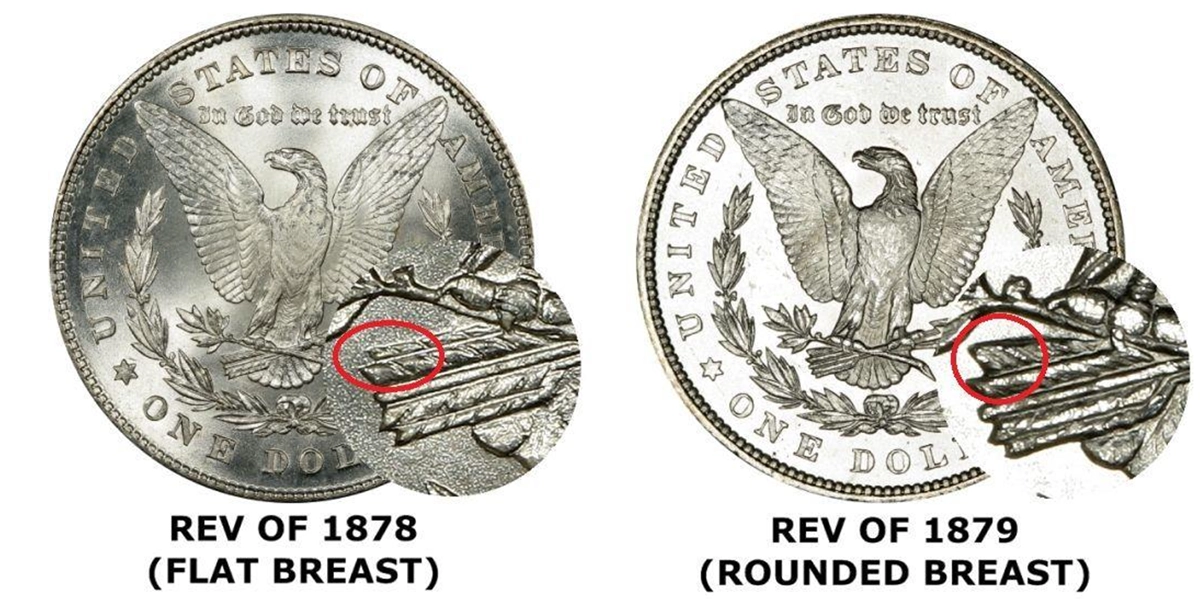
The illustration above shows two reverses used incorrectly on many of the RBC Morgan fakes. For 1878, only the Philadelphia Mint used the reverse of 1879; both San Francisco (“S”) and Carson City (“CC”) used the reverse of 1878. I marked in a red circle an obvious difference between the two. No Morgan Dollars minted in New Orleans (“O”) are dated 1878.
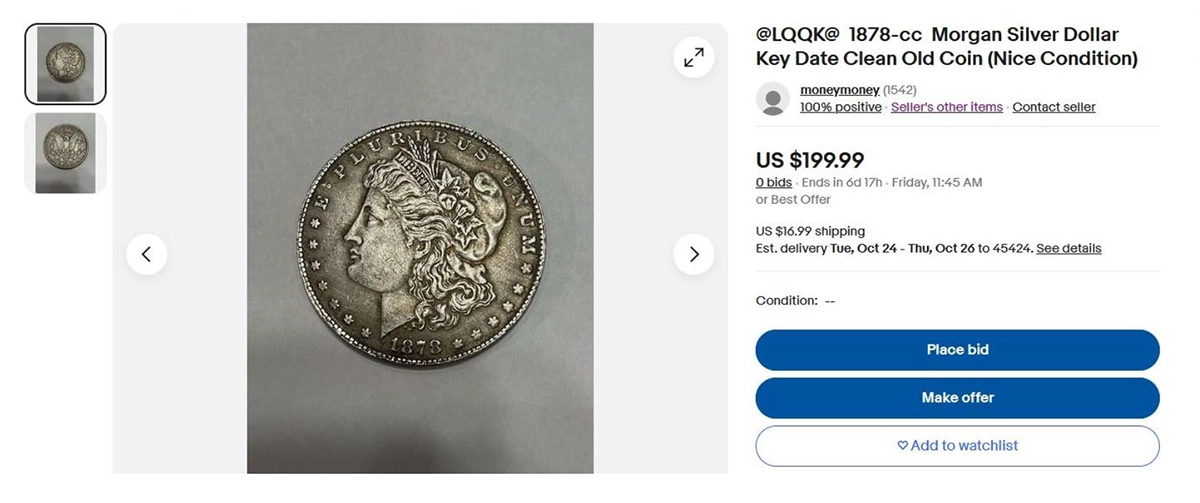
This eBay-listed 1878-CC Morgan violates the proper reverse rule for the date and mint. As a bonus, it uses a common bad reverse used on many counterfeits currently in the marketplace.
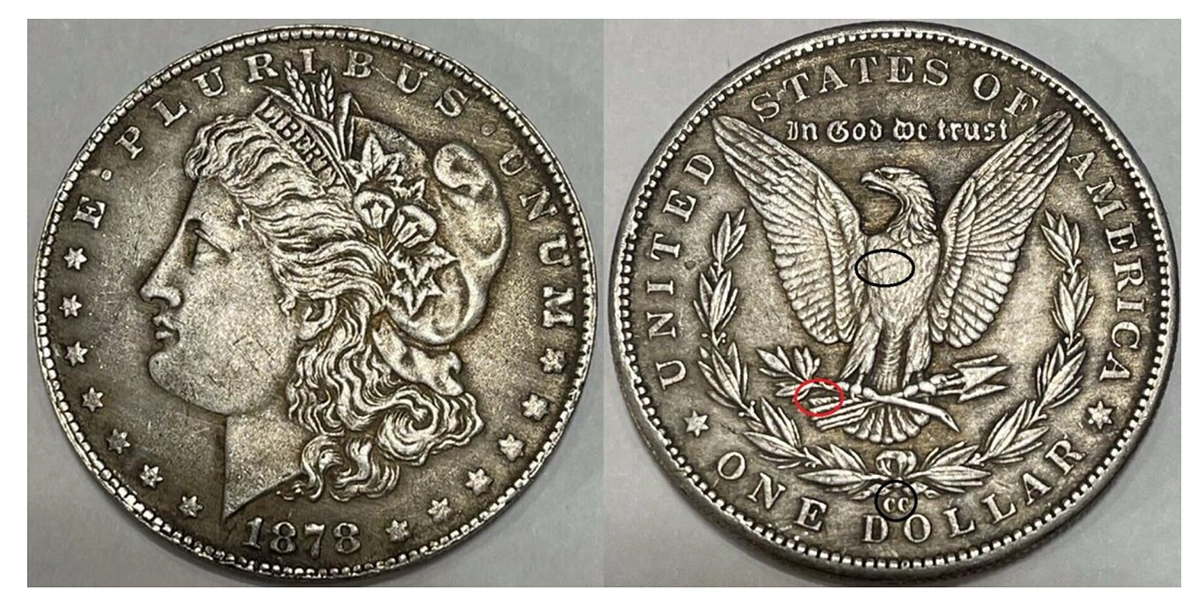
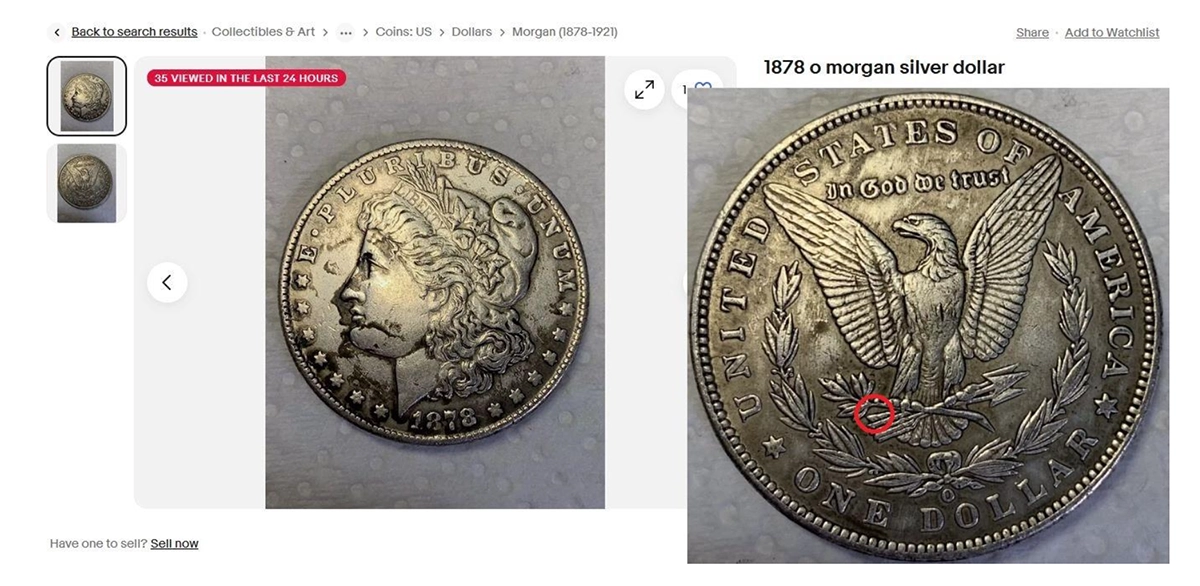
It’s anyone’s guess what reverse New Orleans would have used if striking Morgans in 1878, but it probably wouldn’t be this one!
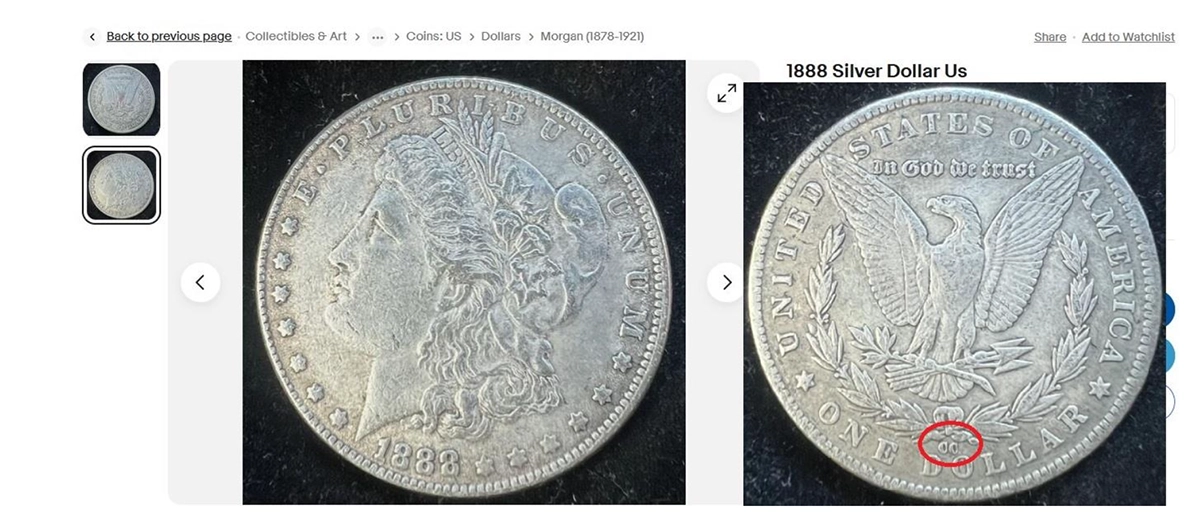
And maybe the seller didn’t mention the “CC” found below, as there were none minted in Carson City dated 1888. Just check the Red Book…
And one final piece for this discussion, here is a 1900-dated example with the wrong reverse.


So, it remains a jungle out there! If you’re just starting out or need a handy basic guide for quick reference concerning U.S. coins, I highly recommend buying a copy of the Red Book! I have literally worn two out with use.
From the Dark Side and Fun with Fakes, I always appreciate the help I receive from my friends!
Best, As Always,
—Jack
MORE Articles on Counterfeit Coins by Jack D. Young
* * *



